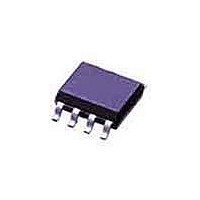1240S08-U THAT Corporation, 1240S08-U Datasheet - Page 6

1240S08-U
Manufacturer Part Number
1240S08-U
Description
Difference Amplifiers Balanced Input Line Receiver 0dB SO-8
Manufacturer
THAT Corporation
Datasheet
1.1243S08-U.pdf
(8 pages)
Specifications of 1240S08-U
Maximum Operating Temperature
+ 85 C
Minimum Operating Temperature
0 C
Mounting Style
SMD/SMT
Operating Temperature Range
0 C to + 85 C
Output Current
+/- 25 mA
Operating Supply Voltage
+/- 18 V
Package / Case
SOIC-8
Lead Free Status / RoHS Status
Lead free / RoHS Compliant
Document 600035 Rev 04
thought of as precision differential amplifiers with
gains of zero, -3 and -6 dB respectively. These
devices are primarily intended as balanced line
receivers for audio applications.
topology lends itself to other applications as well.
Basic Balanced Receiver Applications
1240, 1246, and 1243 configured as zero, -6 dB, and
-3 dB line receivers. Figures 8 and 9, respectively,
show the 1243 and 1246 configured as +3 dB and
+6 dB line receivers. The higher gains are achieved
by swapping the positions of the resistors within
each pair in regard to signal input vs. output.
precision summing amplifier. This circuit uses both
the In+ and Ref pins as inputs. Because of the excel-
lent matching between the laser-trimmed resistor
pairs, the output voltage is precisely equal to the sum
of the two input voltages.
More Complex Applications
mentation amplifier. The two opamps preceding the
1240 provide gain equal to 1+(9.998 kΩ / R
1240 rejects common mode signals while accepting
balanced ones.
a typical audio ADC with balanced inputs.
circuit accepts +24 dBu in. By using a pair of THAT
1246 ICs connected in anti-phase, the signal level
The THAT 1240, 1243, and 1246 are usually
Figures 5, 6, and 7, respectively, show the THAT
Figure 10 shows a THAT 1240 configured as a
Figure 11 shows a 1240 configured as an instru-
Figure 12 shows a convenient method of driving
-In
+In
+In
-In
2
3
2
3
In+
In+
In-
In-
Figure 6. -3 dB line receiver
Figure 7. -6 dB line receiver
10.5k
10.5k
12k
12k
4
4
7
7
V
V
V
V
Tel: +1 508 478 9200; Fax: +1 508 478 0990; Web: www.thatcorp.com
CC
EE
CC
EE
THAT Corporation; 45 Sumner Street; Milford, MA 01757-1656; USA
7.5k
7.5k
6k
6k
Sense
Sense
U1
1243
U1
1246
Vout
Vout
Ref
Ref
However, their
5
6
1
5
6
1
Copyright © 2008, THAT Corporation
Output
Output
g
). The
Applications
This
Page 6 of 8
between their respective outputs is +24 dBu. An
attenuator network brings this signal down by 24 dB
while attenuating the noise of the line receivers as
well.
and since there are two of them, the total noise level
going into the resistive pad will be -103 dBu. The
pad reduces the noise level to -127 dBu at the input
to the ADC. The noise density resulting from the line
receivers will therefore be
e
2.05 nV/√Hz. We can assume that the noise contri-
bution of R
the total noise density going into the input of the ADC
will be
e
Noise
controlling gain in a balanced system. In such
circuits, designers are often tempted to keep the
signal balanced and use two Voltage Controlled
Amplifiers (VCAs) to independently control the gain
on each half of the balanced signal. Unfortunately,
this can result in common-mode to differential mode
n line receiver
n total
The output noise of a THAT 1246 is -106 dBu,
The thermal noise of the 249 Ω resistor is
The noise floor can then be calculated to be
Figure 13 shows the recommended method for
( dBu )
= (2.45
+In
-In
+In
-In
= 20 log
8
=
and R
Figure 9. +6 dB line receiver
Figure 8. +3 dB line receiver
10
2
3
2
3
nV
Hz
−127dBu
In+
In+
In-
In-
19
20
20kHz
10.5k
10.5k
)
12k
12k
will be negligible, and therefore,
2
3.2
+ (2.06
%0.775
nV
Hz
4
4
7
7
V
V
V
V
0.775
CC
EE
CC
EE
% 20kHz
Balanced Line Receiver ICs
= 2.45
7.5k
7.5k
6k
6k
nV
Hz
Sense
Sense
U1
1243
U1
1246
Vout
Vout
Ref
Ref
)
2
THAT 1240 Series
= −124.7 dBu
5
6
5
6
1
1
nV
Hz
= 3.2
Output
Out
nV
Hz
.











